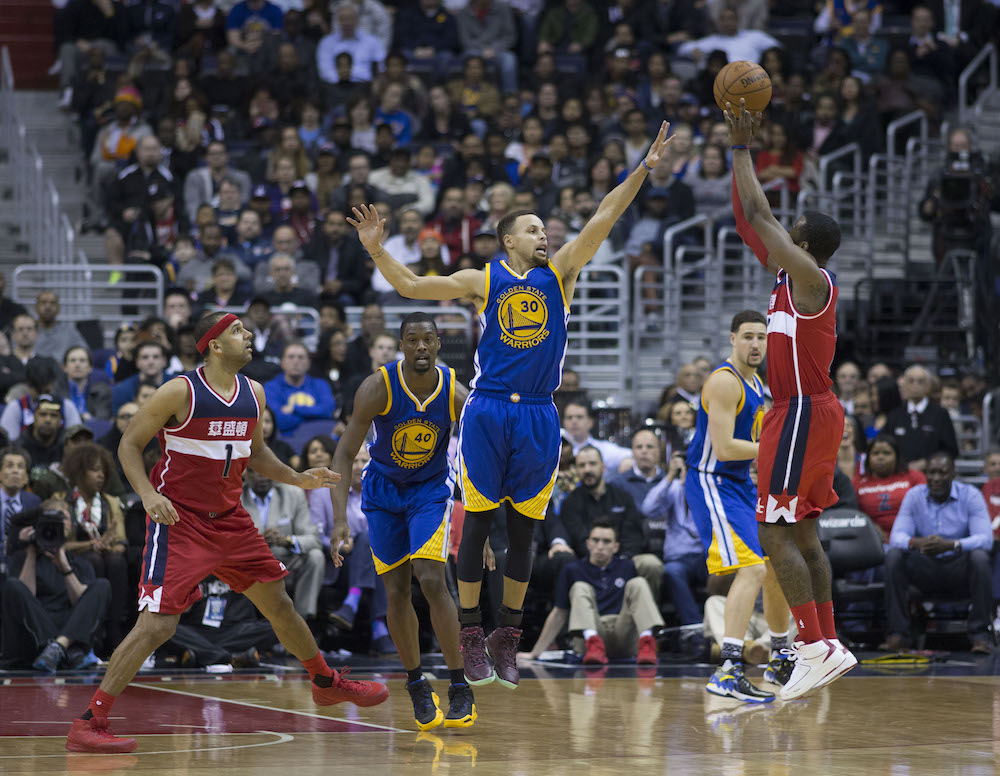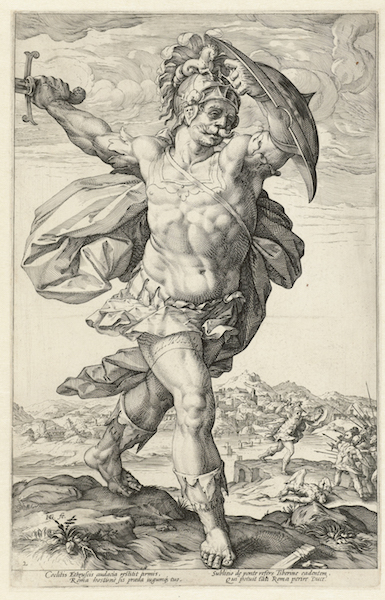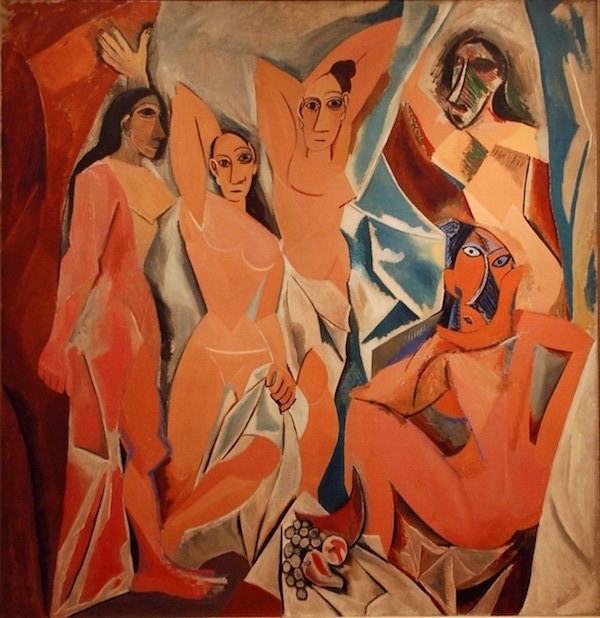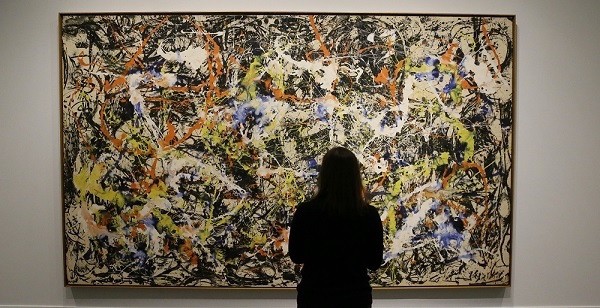
Warriors at Wizards 2/3/16
During an early round of the current NBA playoffs a couple weeks ago, my family’s favorite team, the Golden State Warriors, had an idle evening. Missing the excitement of seeing our squad outplaying an opponent, I suggested to my daughters that we re-watch the game from the previous day. This suggestion provided them—and their mother—proof that I had indeed finally succumbed to senility.
Didn’t I remember watching (and shouting about) the game the night before?
And what, they wondered aloud, could possibly be the point of watching a game, the outcome of which was already known to all of us?
I responded in terms familiar in our household—museums and folklore. I reminded them that we all enjoy repeatedly seeing our favorite artworks at museums we visit. When they join me at the Getty, where I work, we frequently have a look at Franz Xaver Messerschmidt’s “Vexed Man,” whose expression doesn’t change each time, but still pleases us as we seek to understand the cause of his vexation. And we inevitably walk the zig-zag path through Robert Irwin’s Central Garden, which is indeed “never twice the same,” as the artist’s inscription suggests.
And don’t we all enjoy telling our favorite folktales, watching our favorite movies, and reading our favorite stories again and again? So repeat viewing of the Warriors’ artistry seems perfectly reasonable to me.
The game in question had been particularly masterful. In his first game back from an injury-induced, two-week hiatus, Warriors star Stephen Curry, the league’s Most Valuable Player, scored 17 points in overtime to lead his team to victory. Those 17 points were more than any player in any NBA game ever has scored in a five-minute overtime period, and more than two entire teams (Toronto and Miami) had combined to score in their overtime earlier in the day.
This performance and subsequent ones have brought the Warriors to the verge of their second straight NBA championship—and have left commentators searching for the right terms to describe the Warriors’ excellence. This is a team that won a record 73 games in the regular season (out of 82) and a host of awards. It also turned frequent, long-distance shooting—long dismissed as a poor strategy—into a new, exciting style of basketball. Was this not a work of art?
And a new form of art at that. Watch some basketball games on TV and you can notice that a typical sequence consists of one or two players dribbling the ball and then shooting. In contrast, watch the Warriors and you will see (if the cameras, which have been trained to focus on the ball, reveal it) a constant flow of movement and multiple passes before a shot is launched. Fitting this style, the Warriors have assembled numerous players who seem able to put the ball in the basket from anywhere on the court once their motion frees them for the shot. The Warriors led the league this season with over 20 assists per game. Their style is similar on the defensive side as well, with all five players rotating in perfect choreography as they move about, frustrating their opponents.
Now other teams are changing their styles—and searching for more versatile players like those on the Warriors, who can handle the ball, shoot 3-point shots, and play multiple positions. The Warriors’ style has revived some of the old metaphors for describing basketball, such as the coordinated improvisation of a jazz quintet. But it has also spawned a search for new explanations for their extraordinary success. The New York Times Magazine focused on majority owner Joe Lacob and his inclusive, team-oriented management style honed in Silicon Valley. An opinion piece in the Los Angeles Times, on the other hand, pointed out the Warriors’ special team dynamics, in which Curry is the star but the versatile and sometimes volatile Draymond Green is the team leader.
The Warriors’ motto, “Strength in Numbers,” reflects their unselfish distribution of contributions. Yet such a successful and innovative approach to the game deserves more than a motto or a refurbished metaphor, so I return to my fields of art and folklore in search of the best way to describe my team.

Horatio Cocles, 1586, Hendrick Goltzius. Engraving.
Their name gave me a first idea: What great warriors of legend find embodiment in the Warriors of the hardwood? Roman hero Horatius Cocles, immortalized in Lord Macaulay’s 1842 epic poem “Lays of Ancient Rome,” is a candidate. Like the diminutive Curry, who was overlooked by recruiters for major college programs, Horatius unexpectedly rose from the ranks and inspired his fellow Romans. With two fellow warriors at his side, he stood at the Pons Sublicius, preventing the invading Etruscans from crossing into Rome. One can imagine the indomitable Curry flanked by Green and Klay Thompson (or is it Andre Iguodala and Andrew Bogut?), the bridge on their jerseys a reminder of their fending off an invasion from across the Bay.
But the Warriors are, in fact, misnamed. Their strength is not the rippling muscles and flaying sword of Horatius. Their greatness is their artistry and finesse, calling to mind the masters of the Renaissance, not the soldiers of antiquity. When Curry weaves around defenders, hoisting multiple long-range shots rendering broadcasters at a loss for words, he is more like Michelangelo chiseling his David, leaving viewers agape for centuries. Yet the analogy of the Renaissance master fails to account for the collective effort of the team. Even the idea of the Renaissance workshop is inadequate since the Warriors teammates mean so much more than a group of skilled yet unrecognized supporters of a great artist.
The Warriors’ art is a modern one. From ownership to every coach and player on the bench, they see the game differently than others before them. They are Picasso, whose cubist paintings enable us to see a subject from multiple sides simultaneously. The Warriors frustrate defenders who view the court from a traditional perspective; their motion offense envisions various options while the opposition sees only a static play. Like the five Demoiselles d’Avignon, the five Warriors on the court shock and inspire viewers to see the world anew.

Les Demoiselles d’Avignon, 1907, Pablo Picasso. Oil on canvas.
But Picasso’s modernism, while providing an apt means for appreciating the radically different style of Warriors basketball, still fails to capture the fluidity and motion that make their game such a pleasure to watch, and re-watch. To describe the continual slashing and weaving of the five players we need another icon of modern painting. The Warriors style has all the rhythm and movement of a Jackson Pollock drip painting. Their game plan consists not of the static cliché of X’s and O’s on a coach’s clipboard; it is the free movement and colorful beauty of a big, bright Pollock canvas.

“The painting has a life of its own. I try to let it come through.” – Jackson Pollock
So if a friend tries to tell you to go to a museum and get some culture, feel free to say you prefer the comfort of your couch, and turn on the game to watch those masters of modern artistry, the Golden State Warriors.




Send A Letter To the Editors